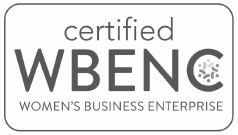When was the last time you updated your healthcare marketing plan? Are the message points up-to-date and do they reflect the current state of your company, firm or practice? Maintaining a current healthcare PR strategy can help to ensure consistency of communications and that all marketing activities remain on brand. Here are some key components to include in your healthcare PR strategy.
Measurable goals and objectives
How will you know if your healthcare PR program is working? What data will you use to inform strategic refinements during the implementation process? Setting measurable goals and objectives not only ensures consistency across marketing and PR teams, but clearly defines the role that communications will play in helping to achieve overall organizational goals.
Agreed-upon key message points
Have you ever evaluated your practice’s or facility’s media coverage to assess which spokespeople are most effective at delivering which message points? Or to determine which key messages resonate the most with local, regional, national and trade media?
While these insights can help to hone the effectiveness of your PR program, establishing a set of key message points and securing buy-in from all key parties is an important first step. This helps to ensure spokespeople are speaking about programs, services, etc. consistently, which helps to build both brand familiarity and brand equity. Securing media training for your spokespeople can also help to ensure these messages are delivered to media as authentically and effectively as possible.
A crisis communications plan
While the mere thought of responding to a crisis can be overwhelming, it is critical for healthcare institutions to maintain an up-to-date crisis communications plan. The plan should be consistently updated with learnings from past crises as well as the team members who are responsible for various aspects of implementation. When tasked with maintaining a focus on patient care all while briefing the community and deescalating an already tense situation, the value of an up-to-date crisis communications plan will be apparent.
An expert source list
Whether you are part of a large corporate health system, a small specialty group or a family of rehabilitation centers, knowing who the media can rely on for specific areas of expertise is part of executing an effective marketing communications program. Your healthcare PR strategy should include an up-to-date media source list along with the pertinent contact information for each of these spokespeople. This list is an important tool for building relationships with your organization and the media as well.
Success metrics
How will you evaluate your success in achieving the measurable goals and objectives that you have set forth? Don’t overlook the importance of identifying how you will measure success and when you will measure. You don’t want to wait until the end of the year to find out you allocated 60% of your marketing resources to the channel that yielded the lowest rate of return. Thus, ongoing measurement is key to success. Be sure to set success metrics relative to both your overall goals and the various marketing channels you are using.
Developing a research-informed strategy is an important foundational component of an effective healthcare marketing program. From the goals to the success metrics and the message points and marketing channels in-between, consistency, clarity and cohesion are key to continued success.


